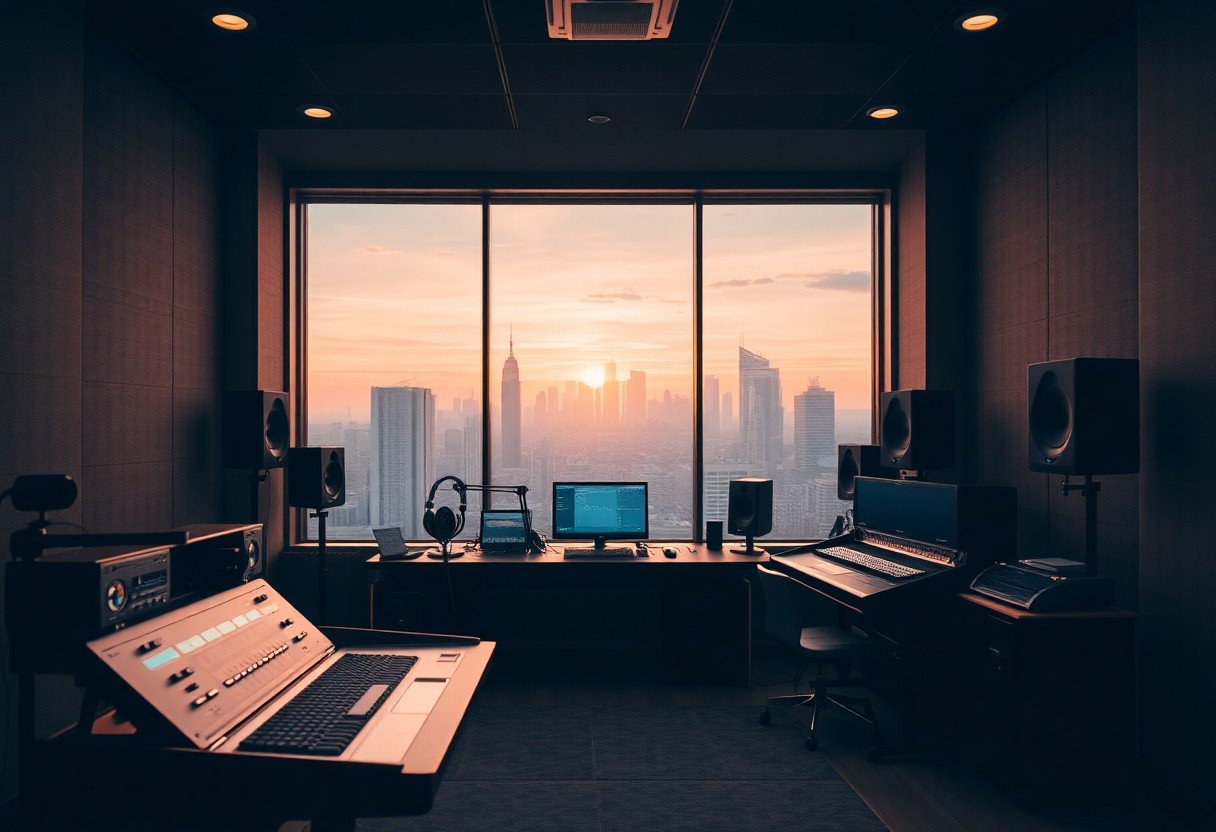There’s a way to secure free studio time that more artists should know about. In my journey, I discovered Jesper Jacobi’s innovative approach, which combines networking with valuable skills. By leveraging your talents to offer services in exchange for studio sessions, you can save money while enhancing your craft. I’ll break down how you can implement this hack effectively, ensuring that you not only gain access to professional equipment but also build relationships within the music industry. If you’re ready to boost your production game, read on!
The Genius Behind Jesper Jacobi’s Strategy
Who is Jesper Jacobi?
Jesper Jacobi is a name that resonates within the music industry, particularly among aspiring artists and producers seeking to make their mark. Known for blending unconventional methods with an astute understanding of studio dynamics, his approach has caught the attention of many. Through a mix of creativity and strategic networking, Jesper has navigated the competitive landscape of music production, often finding unique pathways to success.
The Foundations of His Innovative Approach
What sets Jesper apart is his ability to leverage the symbiotic relationship between artists and studio owners. By emphasizing goals that align with studio priorities, he creates a win-win situation. This allows artists to capitalize on opportunities for free studio time, while studios benefit from increased exposure and potential future collaborations.
Jesper’s strategy is rooted in the understanding of value exchange. He encourages artists to pitch projects that highlight the studio’s uniqueness – whether it’s state-of-the-art equipment or a specific ambiance. This pitch not only appeals to the studio’s desire for exposure but also garners interest from other artists, creating a buzz in the community. By fostering a collaborative environment, Jesper amplifies his network and secures his footing in the industry, offering a model worth emulating for anyone looking to maximize their resources.
Analyzing the Barriers to Studio Time Access
Many aspiring musicians face numerous obstacles when seeking access to studio time. High rental fees and limited availability are among the most significant challenges. Factors like geography, economic disparities, and even scheduling conflicts can make it difficult for artists to secure the time they need to create. Understanding these barriers can help you navigate around them more effectively, leading to more opportunities for your artistic endeavors.
Common Misconceptions About Studio Costs
A common myth is that all studio time is prohibitively expensive. While some high-end facilities charge top dollar, many affordable options exist. In fact, local studios often provide competitive rates, and some may even offer discounted rates for emerging artists. By doing your research and reaching out, you might find that quality studio time is more accessible than you initially thought.
The Role of Networking in Securing Opportunities
Building a network within the music industry opens doors to opportunities you may not find through traditional channels. Establishing genuine relationships with fellow musicians, producers, and studio owners can lead to shared resources and connections. I’ve personally landed several studio sessions through friends who were willing to vouch for my work, demonstrating how interlinked our communities can be.
Networking creates a web of relationships that can significantly boost your access to studio time. Imagine a situation where a musician you collaborate with has a studio connection; by talking to them about your project, they might offer you a slot at their studio or refer you to someone who can. Additionally, attending music workshops, open mics, or local shows can expose you to potential collaborators who can help you gain access to studios at lower costs or even for free as part of a joint project. Investing time in your connections today can pay off in ways you might not expect tomorrow.
Jacobi’s Three-Step Method to Unlock Free Studio Time
Unlocking free studio time can be streamlined into a simple three-step method that maximizes your chances of scoring that coveted access. Each step is designed to build lasting relationships and leverage opportunities within the music community.
Building Mutual Value with Studio Owners
Creating a symbiotic relationship with studio owners boosts your chances of obtaining free studio time. By offering to promote their studio on social media, or even giving them a shout-out in your projects, you prove to be an asset, making it easier for them to justify providing free time.
Leveraging Community Projects for Gains
I’ve found that engaging in community projects not only enhances your network but also serves as a platform to gain free access to studio resources. Local initiatives often seek talented musicians for collaboration, presenting an ideal opportunity to showcase your skills while enjoying studio time without the cost.
Community projects could include local festivals, workshops, or charity events where artists unite to create meaningful content. Participating in these projects allows you to connect with other creators and cultivate relationships with studios involved in community initiatives. When you contribute your unique talents, studios notice, and this can open doors for free sessions in the future.
Utilizing Promotions and Events to Your Advantage
Keep an eye on promotions and events in your area as they often present opportunities for free studio time. Many studios host open houses, contests, or listening parties, where they provide free access for artists to create or showcase their work in exchange for promotion.
Taking part in these promotional opportunities can yield long-term benefits. For example, during a studio’s open house event, I met several studio owners who were eager to build connections. Such events often offer a relaxed environment, giving you a platform to network and showcase your work while enjoying free studio access. You not only save on costs but also gain valuable exposure that may lead to mutually beneficial collaborations in the future.
Transforming Your Skills into Opportunities
Finding innovative ways to transform your skills into opportunities can drastically change your access to studio time. By leveraging what you already know and honing those abilities, you can create value that resonates with studio owners. Whether it’s mixing, songwriting, or even video production, showcasing your unique talents can open doors previously thought closed.
Identifying Your Unique Talents
Reflecting on your experiences, I encourage you to pinpoint the skills that set you apart from others. Maybe you’re a formidable songwriter, an exceptional instrumentalist, or possess a knack for sound design. Discover what you excel at and polish those skills until they shine. This process not only builds confidence but also helps you find the right angle to pitch to studio owners.
Crafting a Compelling Offer to Studio Owners
When approaching studio owners, I’ve found that a well-crafted offer can make all the difference. Highlight the unique skills you bring to the table and propose how these can benefit their studio. Frame your offer not just as a barter for studio time, but as a win-win scenario where both parties gain value. Providing examples of your past work or success stories enhances your credibility and can sway their decision in your favor.
Think about what studios are looking for beyond just time on the clock. Maybe they need assistance with marketing, an infusion of fresh sounds, or even help with their social media presence. I once proposed a package deal that included my songwriting for their upcoming projects in exchange for studio time. Not only did this showcase my talents, but it also presented a compelling reason for them to collaborate. Always tailor your pitch to align with their needs while making it clear how your skills can elevate their work. Be specific and relatable; your goal is to forge a mutual partnership.
Real-Life Impact: Success Stories from Musicians
Many musicians who adopted Jesper Jacobi’s techniques have witnessed remarkable transformations in their careers. For instance, singer-songwriter Emily Hart leveraged Jacobi’s method to secure numerous studio sessions and subsequently released an EP that captured critical acclaim. This success not only expanded her fanbase but also opened doors for major collaborations. Musicians are no longer confined by budget constraints, empowering them to fully explore their artistry in professional settings.
Testimonials of Artists Who Followed Jacobi’s Approach
Artists consistently share how implementing Jacobi’s approach changed their trajectory. Indie band The Soft Tones credited his strategies with helping them connect with local studios, leading to their first-ever professional recording. They remarked on the newfound confidence and opportunities it has cultivated in their music-making journey.
Long-Term Benefits of Gaining Access to Studios
Accessing studio time yields significant long-term advantages. Beyond recording initial tracks, you build relationships with producers and sound engineers, opening up numerous avenues for future projects. Collaborations flourish when you’re familiar with the studio environment, allowing for more creative freedom and experimentation. It becomes a cycle of growth where each studio visit enhances your skills and elevates your music to new heights.
To wrap up
Summing up, I believe that Jesper Jacobi’s hack for getting free studio time is an innovative approach that can significantly benefit you as an aspiring musician or producer. By leveraging networking, demonstrating your skills, and potentially offering services in exchange for time, you can creatively access high-quality facilities. This strategy not only provides you with the resources needed to elevate your work but also helps you build valuable connections in the industry. I encourage you to explore these methods and adapt them to fit your unique circumstances.
FAQ
Q: What is Jesper Jacobi’s Hack for Getting Free Studio Time?
A: Jesper Jacobi’s Hack is a creative approach designed to help aspiring musicians, producers, and artists secure free or reduced-cost studio time. It typically involves leveraging connections within the music industry, building relationships with studio owners or operators, and proposing mutually beneficial collaborations that can introduce new opportunities for both parties.
Q: How can I apply Jesper Jacobi’s Hack in my local music scene?
A: To apply Jesper’s Hack in your local area, start by networking with other musicians and industry professionals. Attend local shows, workshops, or open mic nights to meet studio owners or people connected to studios. Prepare a compelling pitch highlighting your skills and how a collaboration could be beneficial. Consider offering to record a demo or assist with a project in exchange for studio time.
Q: Are there any specific strategies to maximize success with Jesper Jacobi’s Hack?
A: Yes, some effective strategies include creating a strong online presence to showcase your work and music projects, reaching out to studios with personalized messages, and preparing a portfolio that demonstrates your talent. It’s also helpful to know the studio’s recent projects or specialties so that you can align your proposal with their interests.
Q: Is this method suitable for all types of artists or musicians?
A: Absolutely! Jesper Jacobi’s Hack can be beneficial for artists across various genres and disciplines. Whether you’re a solo musician, a band, a producer, or an audio engineer, you can adapt this strategy to fit your unique situation and artistic goals. It’s all about leveraging relationships and creating win-win scenarios.
Q: What if I face rejection or if studios are not interested?
A: Facing rejection is part of the process in the music industry. If studios are not interested initially, consider refining your approach by gathering feedback, improving your portfolio, or expanding your network. Additionally, try reaching out to different studios or exploring alternative methods like partnering with local artists who may have more established relationships. Persistence and adaptability are key.




